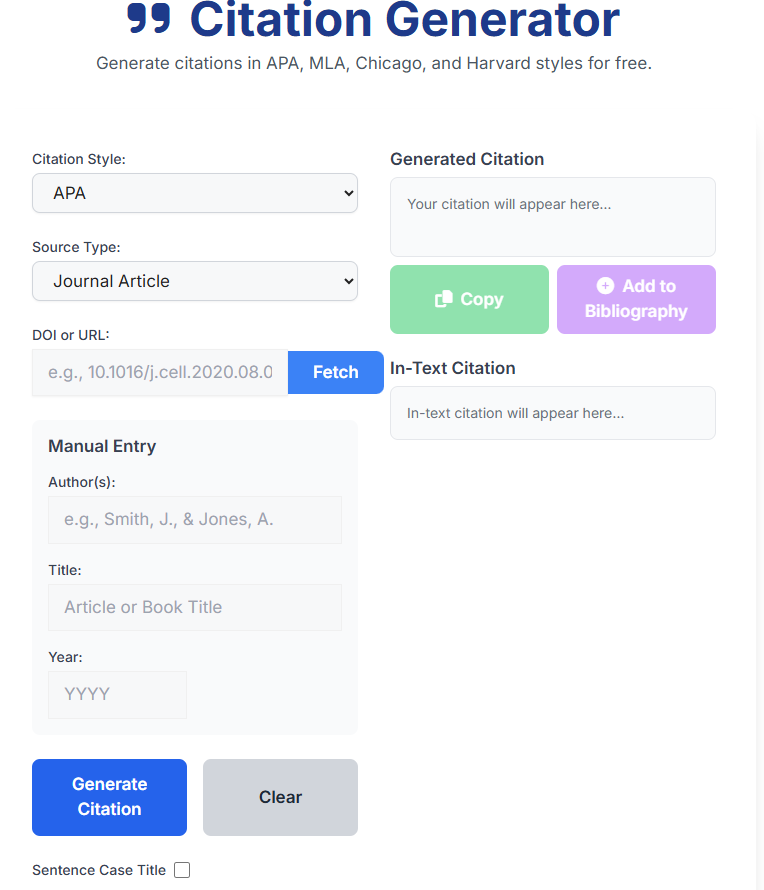Writing a research paper or essay for school can feel like a big challenge. You’ve done all your research, found great information, and now you have to put it all together. But there’s one more crucial step: citing your sources correctly. If you’ve ever felt confused by terms like “APA style” or “reference list,” you’re not alone. This guide will walk you through the most important rules for APA citation so you can give credit where it’s due and make your papers look professional.

What is APA Citation, and Why Does it Matter?
APA stands for the American Psychological Association. It’s a set of rules for formatting academic papers, especially in subjects like psychology, education, and other social sciences.
Think of APA citation as the proper way to tell your reader where you got your information. Every time you use an idea, fact, quote, or image that isn’t your own, you must give credit to the original author. If you don’t, it’s considered plagiarism, which is a serious academic offense. Proper citation shows that you respect other people’s work and that your own research is credible and trustworthy.
In short, learning a few simple APA rules can make your life a lot easier and keep your work honest and professional.
The Two Main Parts of an APA Citation
When you cite a source using APA style, you must include two things: an in-text citation and a reference list entry. You can’t have one without the other!
In-Text Citations
This is a short, quick reference you put right inside the body of your paper. It’s usually placed in parentheses at the end of a sentence or a paragraph where you used information from a source. An in-text citation tells your reader the author’s last name and the year the work was published.
Basic rule: Put the author’s last name and the year of publication in parentheses.
- (Smith, 2021)
If you are quoting directly, you should also include the page number.
- (Smith, 2021, p. 45)
The Reference List
This is a complete list of every single source you cited in your paper. It appears on a new page at the very end. The reference list provides all the detailed information a reader would need to find your sources themselves. The list is always organized in alphabetical order by the author’s last name.
You’ll see that a reference list is much more detailed than an in-text citation. It has things like the full title of the book or article, the name of the publisher, and the URL for websites.
APA Rules for Common Sources
Here are the basic rules for citing the most common types of sources you’ll use in your academic work. Pay close attention to the punctuation, such as commas, periods, and italics.
How to Cite a Book
This is probably the most common source you’ll encounter. The format is straightforward.
Format: Author, A. A. (Year). Title of the book. Publisher.
- Example: Miller, J. A. (2022). The secrets of the ocean. Marine Publishing.
How to Cite a Journal Article
Journal articles are found in academic databases and are very important for research.
Format: Author, A. A. (Year). Title of the article. Title of the Journal, Volume (Issue), pages. DOI or URL.
- Example: Chen, L. (2020). The impact of social media on teenage anxiety. Journal of Adolescent Health, 15(3), 201–210. https://doi.org/10.1016/j.jah.2020.01.002
Notice that the journal title and volume number are in italics, but the issue number is not. The DOI (Digital Object Identifier) is a unique number that helps people find the article online, and it’s always best to include it if you can.
How to Cite a Website or Web Page
Citing websites is a little different because they can change or disappear. You need to include the date the page was published and the URL.
Format: Author, A. A. (Year, Month Day). Title of the web page. Website Name. URL
- Example: Green, M. (2023, June 10). Understanding the basics of neuroscience. Brain & Mind Institute. https://braininstitute.org/neuroscience-basics
If there is no author, use the name of the organization or website instead. If there is no publication date, use (n.d.) which stands for “no date.”
A Few Pro Tips to Master APA
- Be Consistent: The most important rule of all is to be consistent. Don’t mix APA with MLA or Chicago style. Stick to one style throughout your entire paper.
- Watch Your Capitalization: In the reference list, journal titles are in title case (each main word is capitalized), but article titles are in sentence case (only the first word is capitalized).
- Use a Tool: Don’t try to memorize every single detail. An APA citation generator can save you a lot of time and help you create perfectly formatted citations with a few clicks. It’s an easy way to avoid small mistakes and focus on your writing.
Final Thoughts
Citing sources can feel complicated at first, but with a little practice, it will become second nature. The most important thing to remember is to always give credit to the original authors. It shows honesty, academic integrity, and helps your readers find the sources you used. By following these simple rules, you can create a professional-looking paper that you can be proud of.
To make the process even easier, you can use a reliable APA citation generator to handle the formatting for you.
